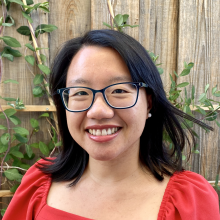-
Title
Group Leader, Microbial Systems Biology -
Email
yung6@llnl.gov -
Phone
(925) 422-7750 -
Organization
PLS-BBTD-BIOSCIENCES, BIOTECHNOLOGY
Research
My research interests span the fields of synthetic biology, biochemistry, and environmental microbiology. Current projects include: engineering bacterial nano- and micro-compartment systems for synthetic biology applications, developing biocontainment strategies for genetically engineered microorganisms, and developing biosynthetic pathways toward DOE relevant bioproducts and materials.
Postdoc in Environmental Microbiology, Lawrence Livermore National Laboratory, 2015
Ph.D. in Biological Chemistry, Massachusetts Institute of Technology, 2012
B.S. in Biochemistry, Tufts University, 2006
Selected publications
- VanArsdale, E., Navid, A., Chu, M. J., Halvorsen, T. M., Payne, G. F., Jiao, Y., Bentley, W. E., & Yung, M. C. (2023) Electrogenetic signaling and information propagation for controlling microbial consortia via programmed lysis. Biotechnol. Bioeng. 120, 1366-1381. https://doi.org/10.1002/bit.28337.
- Halvorsen, T. M., Ricci, D. P., Park, D. M., Jiao, Y., & Yung, M. C. (2022) Comparison of kill switch toxins in plant-beneficial Pseudomonas fluorescens reveals drivers of lethality, stability, and escape. ACS Syn. Biol. 11, 3785-3796. https://doi.org/10.1021/acssynbio.2c00386.
- Lee, T-H., Carpenter, T. S., D'haeseleer, P., Savage, D. F., & Yung, M. C. (2019) Encapsulin carrier proteins for enhanced expression of antimicrobial peptides. Biotechnol. Bioeng. 117, 603-613. https://doi.org/10.1002/bit.27222.
For a full list, see: Google Scholar
- 2022 DOE Early Career Award


